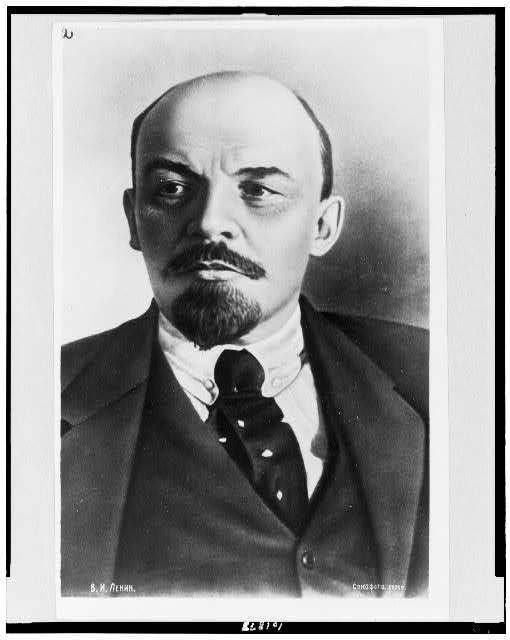Vladimir Lenin
In 1933, Nazi students at more than 30 German universities pillaged libraries in search of books they considered to be "un-German." Among the literary and political writings they threw into the flames were the works of Vladimir Lenin.
Excerpt
While the state exists, there will be no freedom. When freedom exists, there will be no state.
—The State and Revolution, Vladimir Lenin, 1919
Which of Vladimir Lenin's Works were Burned?
All, with the exception of Der Radikalismus die Kinderkrankheit des Kommunismus (Left-wing Communism, an Infantile Disorder: A Popular Essay in Marxian Strategy and Tactics) and Die Revolution von 1917 (The Revolution of 1917)
Who was Vladimir Lenin?

Vladimir Ilyich Lenin (1870-1924) was the son of a school official and civil servant. He studied law, but was expelled for his revolutionary activities. He was exiled to Siberia from 1895-1900.
Lenin was a radical Marxist throughout most of his career. He left Russia to continue his revolutionary activities abroad. Lenin opposed World War I, which he saw as an imperialist struggle. He encouraged the proletariat to rise up and rebel against the capitalist society at home. Lenin returned to Russia after the Russian Revolution broke out in February 1917, and became the virtual dictator of the new Soviet government. Lenin died, after a stroke, in January 1924.
The Nazis had declared themselves the sworn enemies of Bolshevik Russia, its architect and dictator Vladimir Lenin, and his successor Josef Stalin. Lenin's writings, advocating a worldwide revolution of the proletariat under a highly disciplined cadre of leaders, made most of his books immediate targets for burning.

